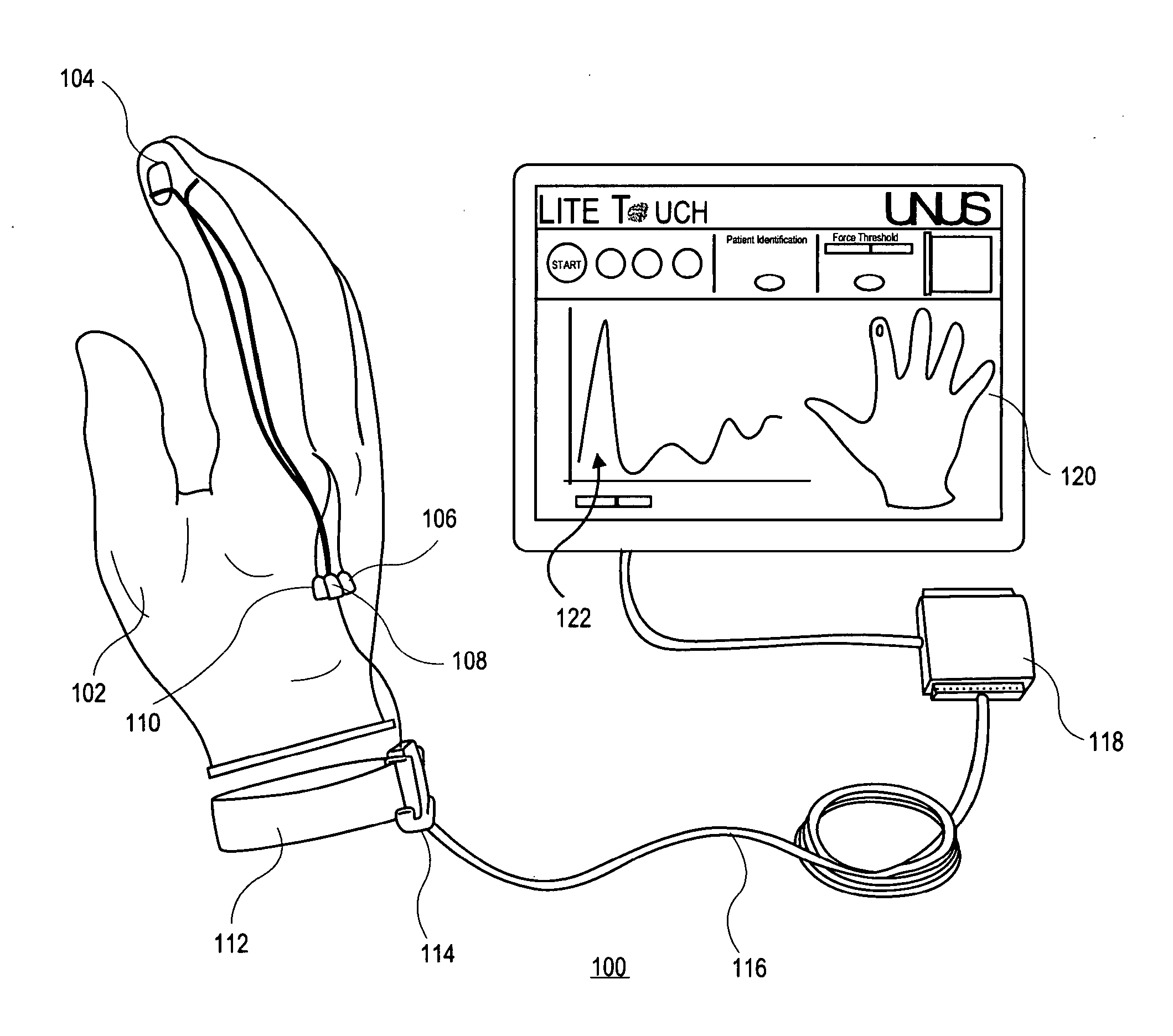Clinical force sensing glove
- Summary
- Abstract
- Description
- Claims
- Application Information
AI Technical Summary
Problems solved by technology
Method used
Image
Examples
Embodiment Construction
[0084]Embodiments of the present invention are directed to a disposable clinical sensing glove intended to provide objective feedback in a clinical setting. The clinical sensing glove includes sensors in the thumb, fingers, and the palm of the glove. Several optical techniques and fabrications are implemented, including a microbend loss technique, a macrobend loss technique, an evanescent coupling technique, a polarimetric sensing technique, a phase modulation technique, a grating-based sensing technique, and a ring resonator sensing technique.
[0085]For some embodiments, the sensors may be in an optical fiber configuration and / or a micro-fabricated waveguide version. A light source is coupled to input an optical signal to the optical fiber and / or micro-fabricated waveguide. A light detector is coupled to detect light exiting the optical fiber optical fiber and / or micro-fabricated waveguide. When the fingers and / or other parts of the glove press on a sensor, a change in the character...
PUM
 Login to View More
Login to View More Abstract
Description
Claims
Application Information
 Login to View More
Login to View More - R&D
- Intellectual Property
- Life Sciences
- Materials
- Tech Scout
- Unparalleled Data Quality
- Higher Quality Content
- 60% Fewer Hallucinations
Browse by: Latest US Patents, China's latest patents, Technical Efficacy Thesaurus, Application Domain, Technology Topic, Popular Technical Reports.
© 2025 PatSnap. All rights reserved.Legal|Privacy policy|Modern Slavery Act Transparency Statement|Sitemap|About US| Contact US: help@patsnap.com



